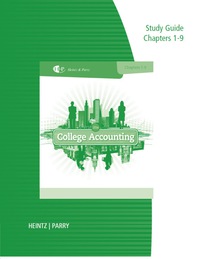Answered step by step
Verified Expert Solution
Question
1 Approved Answer
Which of the following is not one of the basic questions that must be answered before the amount of depreciation charge can be computed? a
Which of the following is not one of the basic questions that must be answered before the amount of depreciation charge can be computed?
a What is the depreciation base to use for the asset?
b What is the asset's useful life?
c What method of cost apportionment is best for this asset?
d What product or service is the asset related to
Which of the following is a realistic assumption of the straightline method of depreciation?
a The asset's economic usefulness is the same each year.
b The repair and maintenance expense is essentially the same each period.
c The rate of return analysis is enhanced using the straightline method.
d Depreciation is a function of time rather than a function of usage.
For income statement purposes, depreciation is a variable expense if the depreciation method used is
a unitsofproduction.
b straightline.
c sumoftheyears'digits.
d decliningbalance.
If an industrial firm uses the unitsofproduction method for computing depreciation on its only plant asset, factory machinery, the credit to accumulated depreciation from period to period during the life of the firm will
a be constant.
b vary with unit sales.
c vary with sales revenue.
d vary with production.
Use of the doubledeclining balance method
a results in a decreasing charge to depreciation expense.
b means salvage value is not deducted in computing the depreciation base.
c means the book value should not be reduced below salvage value.
d all of these answers are correct.
A principal objection to the straightline method of depreciation is that it
a provides for the declining productivity of an aging asset.
b ignores variations in the rate of asset use.
c tends to result in a constant rate of return on a diminishing investment base.
d gives smaller periodic writeoffs than decreasing charge methods.
When depreciation is computed for partial periods under a decreasing charge depreciation method, it is necessary to
a charge a full year's depreciation to the year of acquisition.
b determine depreciation expense for the full year and then prorate the expense between the two periods involved.
c use the straightline method for the year in which the asset is sold or otherwise disposed of
d use a salvage value equal to the first year's partial depreciation charge.
Depreciation is normally computed on the basis of the nearest
a full month and to the nearest cent.
b full month and to the nearest dollar.
c day and to the nearest cent.
d day and to the nearest dollar.
McDonald Company acquired machinery on January which it depreciated under the straightline method with an estimated life of fifteen years and no salvage value. On January McDonald estimated that the remaining life of this machinery was six years with no salvage value. How should this change be accounted for by McDonald?
a As a prior period adjustment
b As the cumulative effect of a change in accounting principle in
c By setting future annual depreciation equal to onesixth of the book value on January
d By continuing to depreciate the machinery over the original fifteen year life
A change in estimate should
a result in restatement of prior period statements.
b be handled in current and future periods.
c be handled in future periods only.
d be handled retroactively.

Step by Step Solution
There are 3 Steps involved in it
Step: 1

Get Instant Access to Expert-Tailored Solutions
See step-by-step solutions with expert insights and AI powered tools for academic success
Step: 2

Step: 3

Ace Your Homework with AI
Get the answers you need in no time with our AI-driven, step-by-step assistance
Get Started


